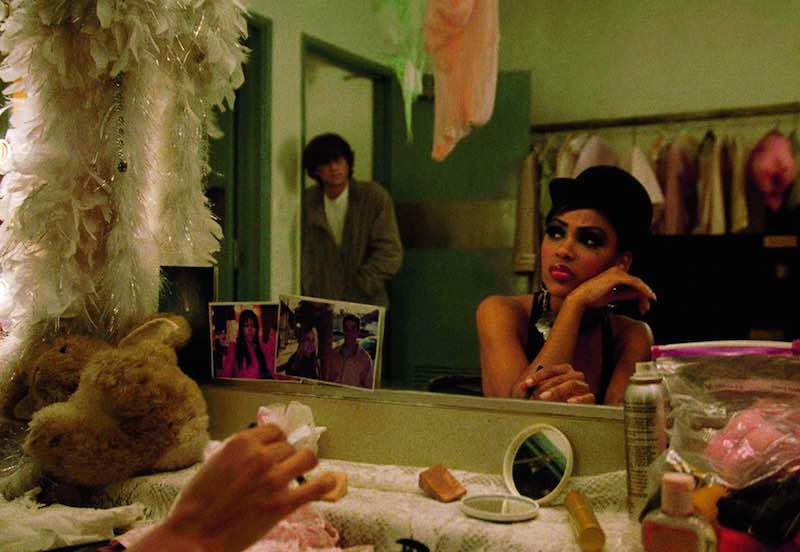Synopsis: Simon (James McAvoy), a fine art auctioneer, teams up with a criminal gang to steal a Goya painting worth millions of dollars, but after suffering a blow to the head during the heist he awakens to discover he has no memory of where he hid the painting. When physical threats and torture fail to produce answers, the gang’s leader Frank (Vincent Cassel) hires hypnotherapist Elizabeth Lamb (Rosario Dawson) to delve into the darkest recesses of Simon’s psyche. As Elizabeth begins to unravel Simon’s broken subconscious, the lines between truth, suggestion, and deceit begin to blur.
Release Date: April 5, 2013 MPAA Rating: PG-13
Genre(s): Thriller, Heist
Film Review

Production
Danny Boyle never ceases to push the limits of his abilities with each new film he directs. Trance is surely going to divide audiences and critics because it is just short of complete madness–and I say this with the greatest amount of respect possible. I have gone so far to call it “Trancetastic,” and without any shame for the silliness of such a term. In a sea of by-the-book formulaic genre pictures Trance throws a twist at the heist movie, gives homage to film noir classics, and takes one step further to completely mess with your mind. I’m still not sure exactly what happened in the last ten minutes, and for that one reason I am willing to watch Trance three more times, maybe more.
The story is all very simple–or so we are led to believe. Simon (James McAvoy) works at a Fine Art Auction House which is unexpectedly robbed by Franck (Vincent Cassell) and his gang. It is in fact an inside job, where Simon is supposed to hide the painting during the robbery and then retrieve it later to enjoy the spoils of their success. All of this is introduced to us by Simon in classic noir style of flashback voiceover narration. The set-up, execution, and aftermath of the heist is seen, as is the one thing that goes wrong. Simon suffers a hit to the head and loses his memory just when everything has gone as planned. Blame it on panic, or self-preservation, but his actions perpetuate the trauma, and lead him into the twisted game that follows. Simon wakes up in the hospital not knowing what happened and most importantly without any recollection of where the painting has been hidden; the painting is Goya’s 1798 oil canvas, “Witches in the Air.” So begins the search for the lost memory, and it all starts in the office of hypnotherapist Elizabeth (Rosario Dawson); a woman who in the case of Trance shall be the femme fatale of the story. And oh, what a femme fatale she turns out to be. The majority of Trance is focused on memories, or the creation of other memories in order to trigger remembering the one that Simon needs. Its a complicated set of ideas, and often times reality and induced fiction lines blur. As Trance moves along in the Boyle-frenetic pace he is exceptionally well at maintaining the truths unfold one by one, the relationships of characters become more and more complex, and suddenly everything you thought you knew, thought was figured out, is further from the truth than imagined possible.
When the twists start coming, one after another, the amount of material being pumped into your brain is overwhelming. The noirish tendencies of the film come at you full force, the feeling we have all been duped obvious. The reveal of what is real and what is not only makes one consider free will, choice, and whether any of the characters in the film ever had a chance at one, or both. Its a mesmerizing experience to see how Trance plays out but do not be surprised if you have absolutely no idea how everything happened, exactly. Its all far too complicated, yet incredibly simple to make sense of; this is the greatness that is watching Trance.

Writing
Screenwriter John Hodge has a long history with director Danny Boyle, having written Trainspotting, The Beach, Shallow Grave, and A Life Less Ordinary. Many directors take along the same cinematographers, editors, or production designers from film to film because their work compliments one another–Steven Spielberg, Martin Scorcese, Wes Anderson, and Terrence Malick are prime examples–and even Danny Boyle has used the same cinematographer for six of his films including Trance, Anthony Dod Mantle. On Trance, Hodge shares writing credits with Joe Ahearne, a writer who has mostly worked in television previously and wrote the TV Movie Trance in 2001 that Boyle’s Trance is loosely based upon.
Hodge and Ahearne construct a mesmerizing heist with film noir roots, with romance and manipulation thrown in for sport. The characters in Trance are accessible but always shrouded in perfect mystery, making it possible to reveal plot twists and misinterpretations of actions throughout. They manage to include ideas about suppressed memory, and the ways in which hypnosis can work to reveal what is hidden and also hide memories as well. This key point to the plot helps lead the viewer on a hypnotic journey. Keeping the audience guessing and making it impossible to guess a twist is a miraculous achievement. Hodge and Ahearne have achieved this in Trance, and the film would be nothing if the script was not constructed so well. The only gripe would be one revelation at the end of the film. It does not take away from the experience that is Trance but it does cause some confusion–the only hint I can give is the yellow room.
Cast and Crew
- Director(s): Danny Boyle
- Producer(s):
- Screenwriter(s): Joe AhearneJohn Hodge
- Story:
- Cast: James McAvoy (Simon)Vincent Cassell (Franck) Rosario Dawson (Elizabeth)Danny Sapani (Nate)
- Editor(s):
- Cinematographer: Anthony Dod Mantle
- Production Designer(s):
- Costume Designer:
- Casting Director(s):
- Music Score: Rick Smith
- Music Performed By:
- Country Of Origin: USA
